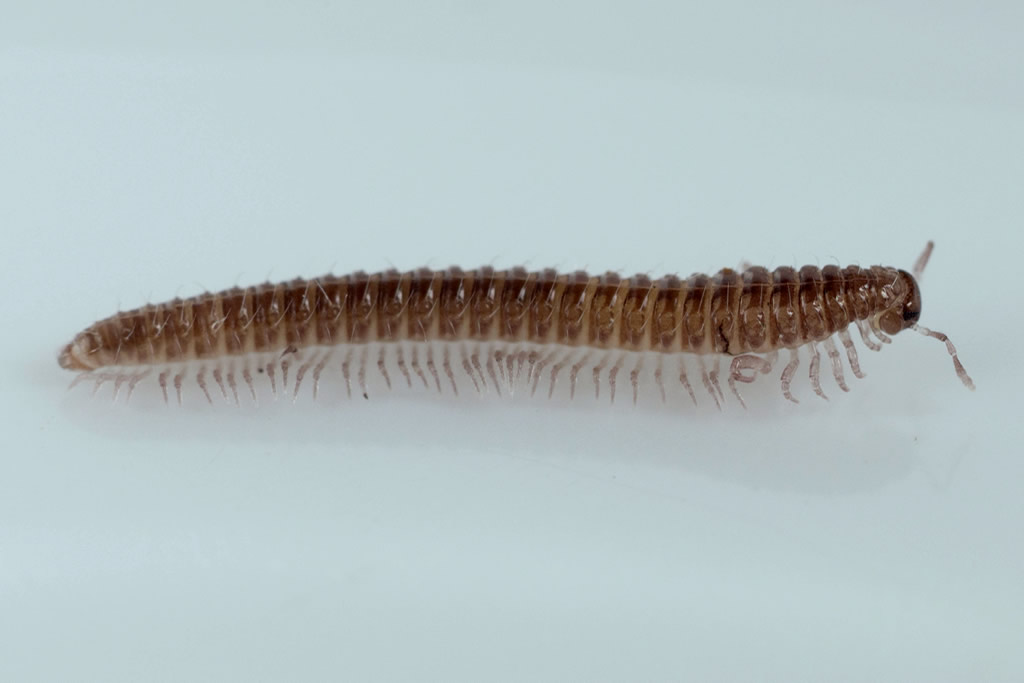Anamastigona pulchella (Silvestri, 1894)
Common name
Synonyms
Status:
- GB IUCN status: Not applicable (non-native)
- GB rarity status: Naturalised
ID Difficulty
Identification
A small brown species (to 11mm in length) with distinct paranota on the side of the body and eyes comprising 15 to 17 well pigmented ommatidia. It is best identified by dissection of male gonopods.
Description, with figures, are given by Anderson (1996) and Gregory, Davidson, Owen & Anderson (2015).
Distribution
The first Irish records of this introduced species were from County Down and County Antrim in 1994. It now appears to be well established as a naturalised component of the fauna of at least ten sites in Northern Ireland. It was first found in Britain at RHS Wisley, Surrey in 2011, and subsequently from Oxford city, two sites in south Wales and a single locality in Glasgow, Scotland (Gregory, Davidson, Owen & Anderson, 2015). Currently about a dozen widely scattered sites are known across Britain, from Cornwall to Essex in the south and north to Glasgow (BMIG Newsletter 42, pg. 8), but current evidence suggests it is under-recorded. It is expected that it will be found at an increasing number of additional sites.
The species has also been introduced to southern France (Mauriès, 1960) and Maderia (Demange, 1970).
Habitat
Insufficient habitat data were available for reliable conclusions to be drawn from the recording scheme data analysis but most of the Irish records are from deciduous woodland and Anderson (1996) suggests that deep, stable litter is preferred. The genus in general occurs in woodland but there are few references to the specific habitat of A. pulchella in its native Italy. The few that exist suggest that the Irish sites are typical for the millipede and it is most probably a species of the woodland litter. There is also one record from Mediterranean maquis vegetation (Desmond Kime, pers. comm.) suggesting it may be able to colonise areas of drier scrub in Ireland.
Phenology
In Ireland adults have been collected from October to February but there is some evidence of a longer than annual life cycle (Anderson, 1996). Adults of English and Scottish specimens were mainly found between October and April (with two mature females found in Oxford in June).
This updated species account is based on Lee (2006).
References
Gregory, S.J., Davidson, M.B., Owen, C. & Anderson, R. (2015) Anamastigona pulchella (Silvestri) – First British records for England, Scotland and Wales (Chordeumatida: Anthroleucosomatidae). Bulletin of the British Myriapod & Isopod Group 28: 31-37.
Anderson, R. (1996) Anamastigona pulchellum (Silvestri) an addition to the fauna of northern Europe, recorded from Ireland. Bulletin of the British Myriapod Group. 12: 7-11.
Links
MilliBase - Global catalogue of Millipedes: https://millibase.org/aphia.php?p=taxdetails&id=1025282








